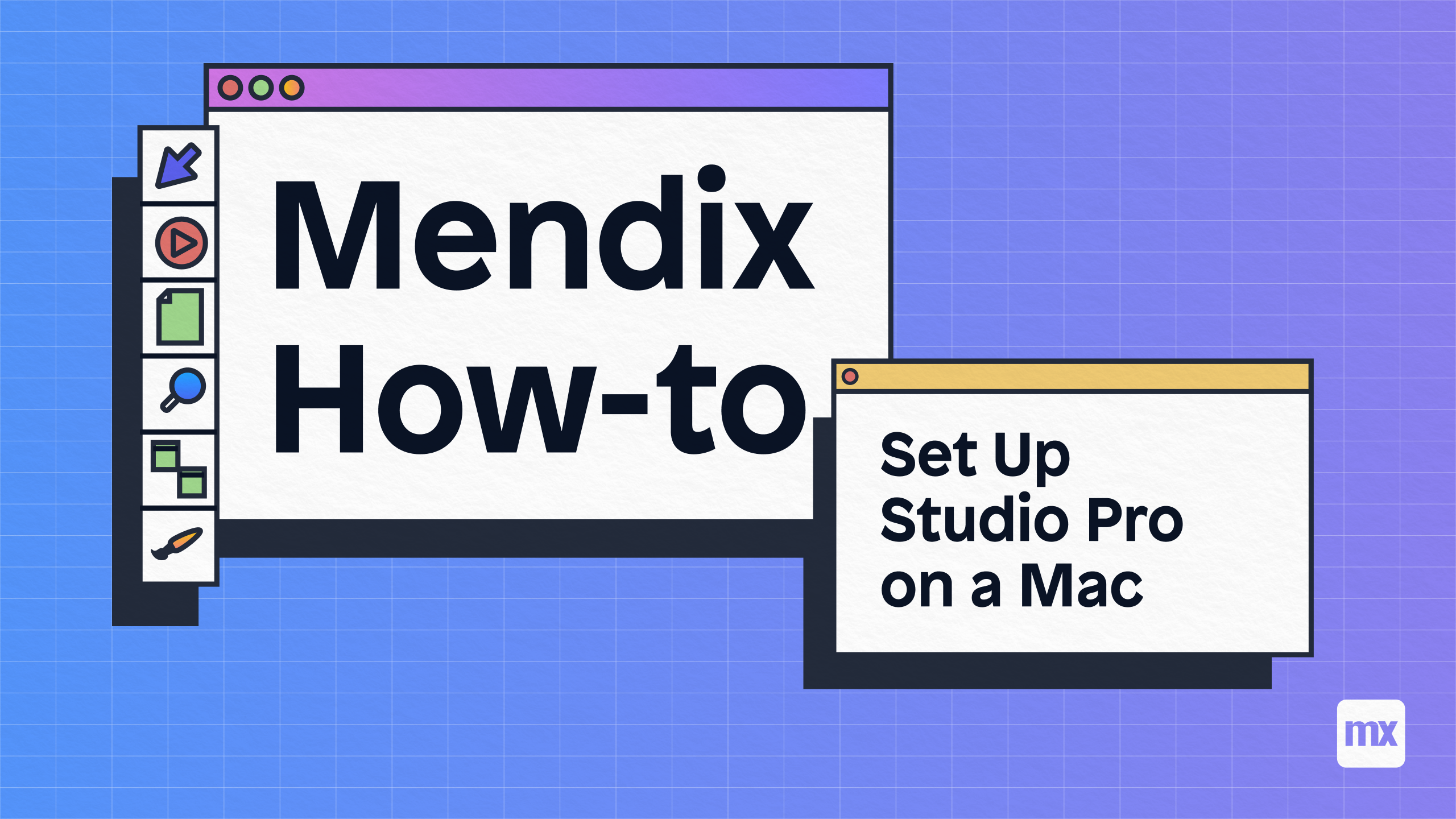Configuring Parallels
Introduction
Using Parallels, you can run Mendix Studio Pro on your Mac device using a Windows virtual machine.
This how-to teaches you how to do the following:
- Configure your Windows virtual machine for Mendix Studio Pro
- Run a Mendix app on a test device using your Windows virtual machine
- Make changes to your app, then view those changes on your test device
For a deep-dive look into installing Studio Pro on a Mac, check out this video:

Prerequisites
Make sure you have completed the following prerequisites:
- Install Parallels Desktop Pro Edition, install Windows when prompted by Parallels, and create a Windows virtual machine (Parallels Desktop Pro Edition is necessary for Mendix’s network features to work)
- Install Mendix Studio Pro on your Windows virtual machine
Configuring Your Windows Virtual Machine for Mendix Studio Pro
To configure your Windows virtual machine to work with Mendix Studio Pro, follow these steps:
-
Open the Parallels Control Center:

-
Click Configuration ( ) to open the Configuration Panel.
-
Navigate to the Hardware tab and select Network from the left panel:

-
Make sure Source is set to Shared Network.
-
Make sure that both the Inbound bandwidth and Outbound bandwidth show unlimited.
If this is not the case, either enable Network Conditioner and set it to a profile that does not limit bandwidth, or click the Options tab then the Optimization pane and set Resource usage to No limit.
-
In the Parallels drop-down menu, select Preferences:

-
Navigate to the Network tab and select Shared from the left panel:

-
If you plan to use the native Mac version for Studio Pro (Studio Pro on Mac) in combination with Parallels, skip this step. Setting up port forwarding will not allow you to sign in when you switch to the native Mac version.
Click the + button and add three ports: one for 8080, one for 8083, and one for 8100 (enables sign in using Parallels). Forward each port to your Windows virtual machine (the 8083 port is only necessary for developing native mobile apps).

After adding those three ports, your Port forwarding rules should look like this:

Congratulations! You have successfully configured port forwarding to enable testing Mendix apps with your Mac.
Checking Network Drive
Whenever you create or open a Mendix app in Mendix Studio Pro, be sure to do so from a mapped drive instead of a network drive.
The Z: drive is typically how Parallels names the network drive on the Mac it is running on. This Z: drive starts with a letter, but is not a mapped drive. Use the C: drive instead, as it is a mapped drive.
Read the tips below to check the network drive before viewing your app on your testing device:
-
Correct mapped drives will always have a letter at the start of their file location:

-
Incorrect network drives will always have \\ at the start of their file location:

Viewing Your App on Your Testing Device
When running your app on your test device, you cannot use the QR code within Mendix Studio Pro’s View Mobile App dialog box:

Instead, you must enter your Mac’s IP address into your Make It Native app. To run your app on your test device, follow the steps below:
-
Make sure your test device and Mac are on the same Wi-Fi network.
-
Place your cursor over your Wi-Fi symbol in your system tray, then click while holding Option to see your Mac’s advanced network information. You will see your IP Address in this drop-down menu.
-
In your Make It Native app’s Host field, type
{your IP address}:8080like this:
-
Click Launch to view your app.
Congratulations! You have successfully viewed your app on a test device.
Viewing Changes to Your App on Your Testing Device
For information on how to change to your app and then see the change on your device, see the Viewing Changes to Your App on Your Testing Device section in Getting Started with Mobile.
Improving Performance
To improve the performance, you can do the following:
- Run Parallels in full-screen mode in a window instead of in Coherence mode
- Store your apps in the virtual machine (VM) on local disk C:\
Increasing Network Speed
When using Parallels, some users might experience slow network speed. For instance, it might take much longer than usual when uploading a Blank Web App to create a new app. Try the following approach, which can increase the upload speed significantly:
- In Windows 10 or 11, navigate to Start > Control Panel> Device Manager > Network adapters > Parallels VirtIO Ethernet Adapter.
- Right-click Parallels VirtIO Ethernet Adapter and select Properties in the drop-down list.
- On the Advance tab, find the Large Send Offload (IPv4) property and change its value to Disabled.
- Click OK.
For more information, see Parallels Forum.